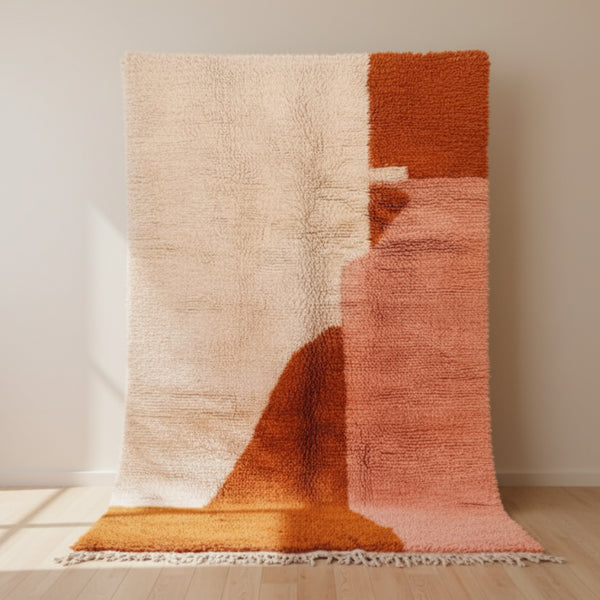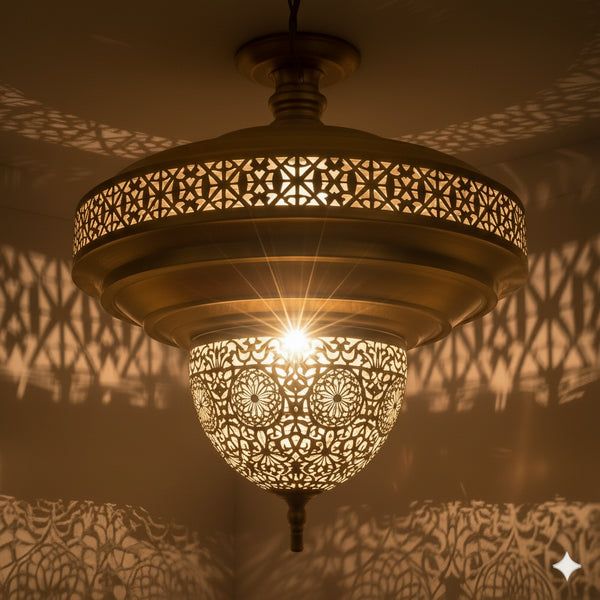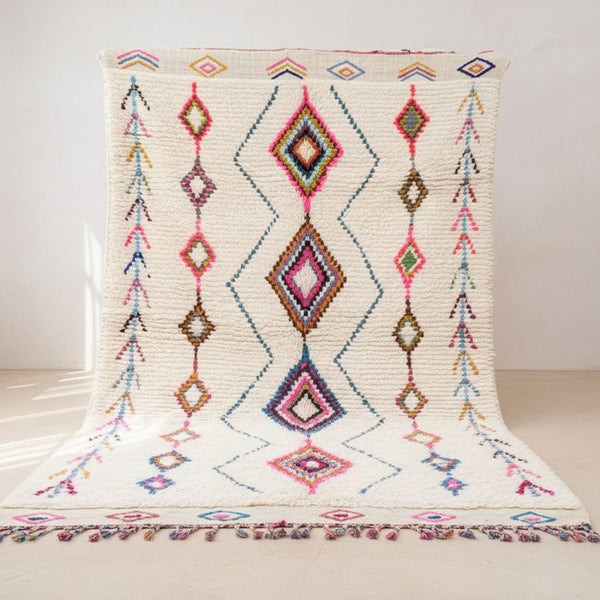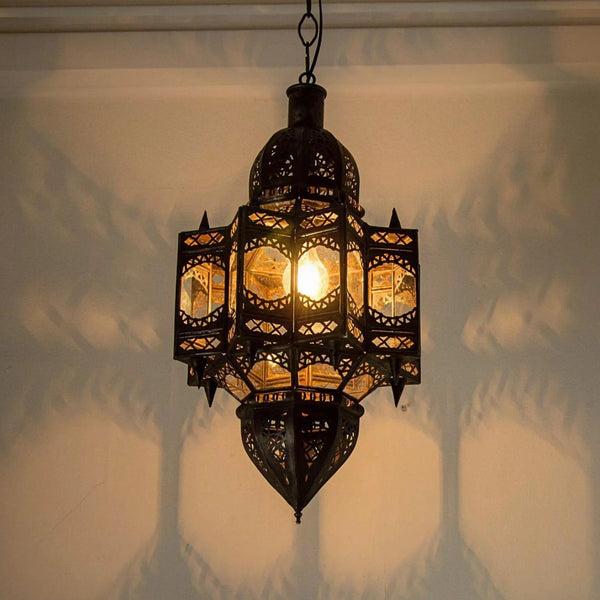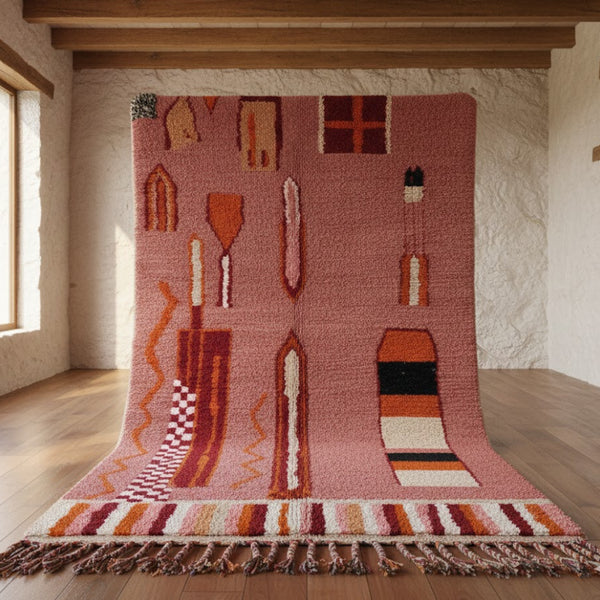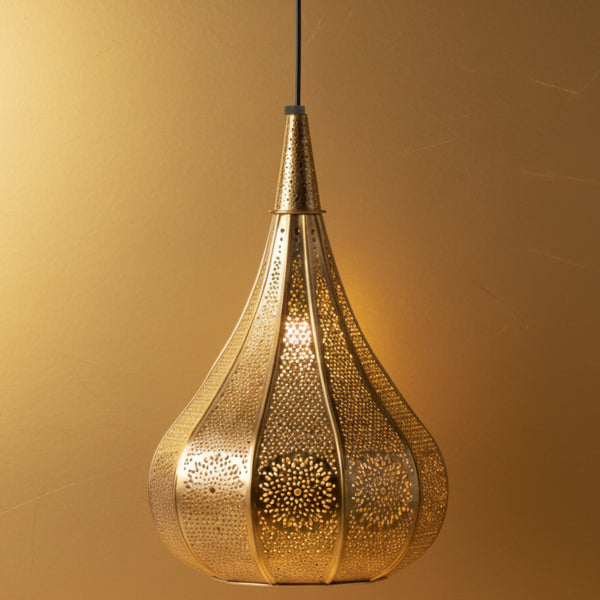Why Handcrafted Rugs Outperform Mass-Made Alternatives
Posted by AADIL KHAN
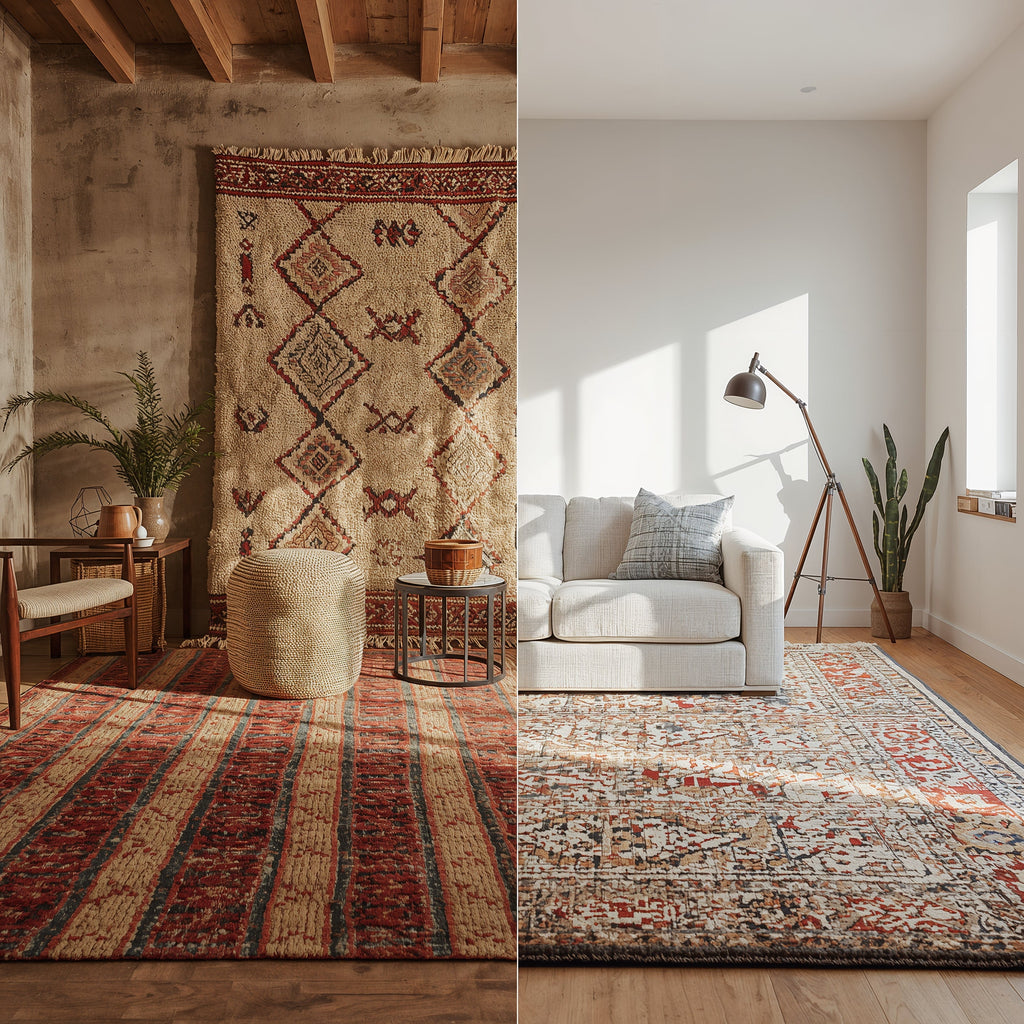
In a world filled with factory-made decor, there’s nothing quite like the beauty of handcrafted pieces. People are rediscovering their warmth and story. Handcrafted rugs especially stand out, as they add both color and depth to a room. Not all rugs are created equal, however. If you’re stuck between the decision of mass produced and handcrafted options, there is a clear winning side. From durability to environmental impact, handcrafted rugs consistently outperform mass produced options.
The Resurgence of Artisanal Design in Modern Homes
Modern homes have seen an increase in personal touches and features that look genuine and real. People are investing in items that are meant to stand the test of time. This trend is perfectly complemented by handcrafted rugs which are steeped in heritage and embody meticulous skills. Unlike mass produced items, these rugs offer character and authenticity, fitting seamlessly into any room.
Walking into a room decorated with a handmade rug is a completely unparalleled experience. Instantly, the colors, depth, texture, and craftsmanship invite you into a whole new world filled with stories. This renaissance of artisan-made decor reflects our collective desire to own fewer possessions, but higher quality items that are longer-lasting.
The Skill Involved with Creating Handcrafted Rugs

Handcrafted rugs tell a story, and the skill that it takes to create them is indefinable. Unlike factory produced rugs, which are made using automated looms decrafting thousands of rugs with the same design, handmade rugs are carefully made by artisans, whose families have been perfecting this craft for generations, one knot at a time.
These artisans usually create pieces of exceptional quality, as they use natural materials such as wool, silk or cotton. Dyes are often derived from plants and minerals which results in colors that become richer with age. These handcrafted rugs take a great deal of time to finish. A single large rug can take months, or even years, to finish based on its size and complexity.
In comparison, machine made rugs focus solely on speed and scale. Through the use of synthetic fibers, chemical dyes, and mechanical weaving, it results in cheap and fast production. These rugs lack charm, resilience, and are harmful to the environment. The difference is much more than aesthetic, it's structural too. Through the use of individual knots that give handmade rugs their shape and strength over decades, factory rugs rely on the use of adhesives and latex backings that deteriorate over time.
Bohemian Rugs: The Art of Individuality and Handicraft Synthesis
Featured as one of the most attractive examples of personalized crafted rugs is the Bohemian Rug. Bohemian rugs showcase individuality with vibrant colors, free spirited patterns, and joyfully ignoring symmetry. No two pieces are exactly the same.
Attempts made in mass production to replicate this look always use flat colors that lack depth and organic beauty of a real Bohemian rug. In such cases, rugs are devoid of life, as well as repetitive motifs. Machine-made replicas of Bohemian rugs fail. There are always new pieces made which adds life to different spaces. A handcrafted Bohemian piece is a genuine work of art which adorns the space differently.
Now imagine a sun-drenched living room with a lush green velvet sofa. A Bohemian rug sits perfectly underneath bursting with terracotta, indigo, and ochre with the patterns swirling in a dance of color and texture. Imagine that level of eye catching detail. You simply cannot achieve it without unique items.
Durability and Longevity: Rest Assured This Rug Will Last
When thinking about getting a rug, it is also good to think about how long one could potentially use it for. Handcrafted rugs are heirlooms and can last for over 50 years if properly maintained. In various cultures, rugs are passed down for generations which has to do with how rugs age – their colors deepen and fibers soften beautifully with time.
This is simple. Rugs made with natural materials and hand-knotting techniques possess a resilient structure. As for wool fibers, they are naturally stain-resistant and flame-retardant. With regular cleaning, these rugs can withstand heavy foot traffic as long as they are rotated.
Many modern made rugs do not have the same longevity. Within a couple of years, they begin to unravel. Synthetics will begin to fray, colors fade, and latex backings crack and shed. What appears to be a low cost option at first, will end up being the opposite as you have to replace it every few seasons.
For proof, antique rugs, such as Persian carpets, kilims, and tribal rugs, testify to being over a century old and still functional. This retains beauty and functionality which proves that these kinds of handmade rugs with high-quality materials can stand the test of time while mass-produced factory rugs simply cannot.
A Tale of Craftsmanship and Heritage
One of the most unique handcrafted woven pieces is a vintage kilim rug. The making of kilims starts in the Anatolia region and stretches all the way to Central Asia as flat woven rugs. Each kilim has come to life with the craftsmanship of the weaver, and tells a unique story through patterns such as symbols of fertility, protection, love, and the daily life movements.
A Vintage kilim rug tells a story of culture, which places it in the same league as important historic relics. Vintage kilims aren’t just a piece of decor or a rug to be stepped on, but rather hold value as artifacts of history. Unlike synthetic ones, vintage kilims acquire their colors from natural plant-based dyes which fade over time giving a beautiful aged look. The designs used are not symmetrical on purpose, which adds charm. They are created from memories passed down generations from grandmothers to granddaughters.
Rugs aiming to copy the vintage kilim style miss the whole point of creativity and artistry. The stitches of people’s hands used to create vintage kilims are replaced with factory printing, which makes these rugs feel empty. For those valuing heritage and authenticity, a vintage kilim adds its value in tradition.
Sustainable Living: Eco-Friendly Alternatives and the Handcrafted Rugs
When discussing modern consumption, we should address sustainability as well. At least with handmade rugs, they are more sustainable than mass-produced rugs. They are made from natural materials such as wool and cotton which are biodegradable, and even the dyes used are environmentally friendly. The weaving process does not require any electricity.
In contrast, machine-made rugs have a greater impact on the environment. They use synthetic petrochemical fibers and industrial dye, both of which are harmful to the environment, as well as consuming a lot of energy. These rugs also contribute to pollution, as the synthetic fibers take centuries to break down.
Purchasing a handcrafted rug is a step toward sustainable living, as each purchase directly counters practices that destroy the environment. This production method sustains the planet instead of destroying it. Supporting methods that exploit the Earth is reckless, especially in today’s climate.
Understanding the Transformation of Your Space From a Boho Style Area Rug

With a Boho style area rug, boosting a room becomes even easier. These types of rugs excel the best in relaxed and eclectic spaces. They work well in both minimalist lofts and cozy cottages. Adding a boho rug instantly adds warmth and character.
Place a big Boho rug in the living room under a low-profile sectional sofa and drape some vintage textiles over the sofa. The mix of modern and handcrafted pieces comes together effortlessly and yet feels intentional.
In the bedroom smaller Boho style area rugs work well underfoot by the bed, or layered over a neutral sisal rug adding texture. In revision spaces like studios, reading nooks, or home offices, it adds an artistic feel that inspires creativity.
A Boho rug is also great for sparking curiosity and invites relaxation. It serves as a reminder that our homes should reflect our individuality, not trends.
Supporting Artisans: More Than Just a Purchase
For every handcrafted rug purchased, an artisan’s culture is kept alive. The purchase supports women weavers who are able to financially support their families through the craft, allowing the industry to thrive, while protecting the cultural heritage from disappearing due to industrialization.
This is very different from factory mass produced products which rely on slave labor, low pay, and poor conditions. Supporting artisans is a fair exchange of receiving a remarkable item, a good reputation, and adequate pay while practicing their craft. Fair payment for exceptional work is far from charity.
Buying anything handmade ramps up the mindful spending an individual participates in. Understanding the story behind the craftsmanship of your rug means they appreciate its value more. Also, they won’t simply throw it away during an overhaul of their interior design.
The Cost Considered: Why Buying Pertained Rugs is Beneficial
Rugs that are made by hand take considerable time and investment, something with value in excess of that. Purchase them, why? They are a decor, and you want them portable; Their proprietary seating, unique carpets, transform into art pieces. Also, these are designed with an esteemed weaving order which gives them potential to even appreciate over time.
There are also rugs made with machines which charge lower – their worth is naught: once they have served their purpose, there is no use to them. But, a customized rug would be a part of your story. Its in its imperfections and the color variations that the beauty lies, which provide authenticity unlike what mass production strives for.
When assessing costs, take into account:
-
Lifespan (decades compared to just a few years)
-
Resale value (often strong for high-quality vintage pieces)
-
Aesthetic impact (unique versus mass-market)
Part of the journey is learning how to identify authentic handmade rugs. Check for:
-
Knots visible on the back
-
Natural materials like wool, silk, or cotton
-
Color and weave irregularities
Conclusion: Select Craft, Character, and Consciousness Instead Of Convenience
Rugs that are handcrafted tell a story. They reflect ancient cultures and the amazing creativity of people throughout history. Handcrafted rugs have a more meaningful connection because, unlike mass-produced rugs, these underwent the true test of quality, sustainability, and emotional connection.
If you want your home's decor to showcase not only your style, but also your principles, you know exactly where to invest. It is time to support true craftsmanship and artisans so that you will obtain life-enriching creations that would last for decades.
Explore our collection of Bohemian rugs, Vintage kilim rugs, and Boho style area rugs to handpick the perfect handcrafted rug that will transform your space today.
